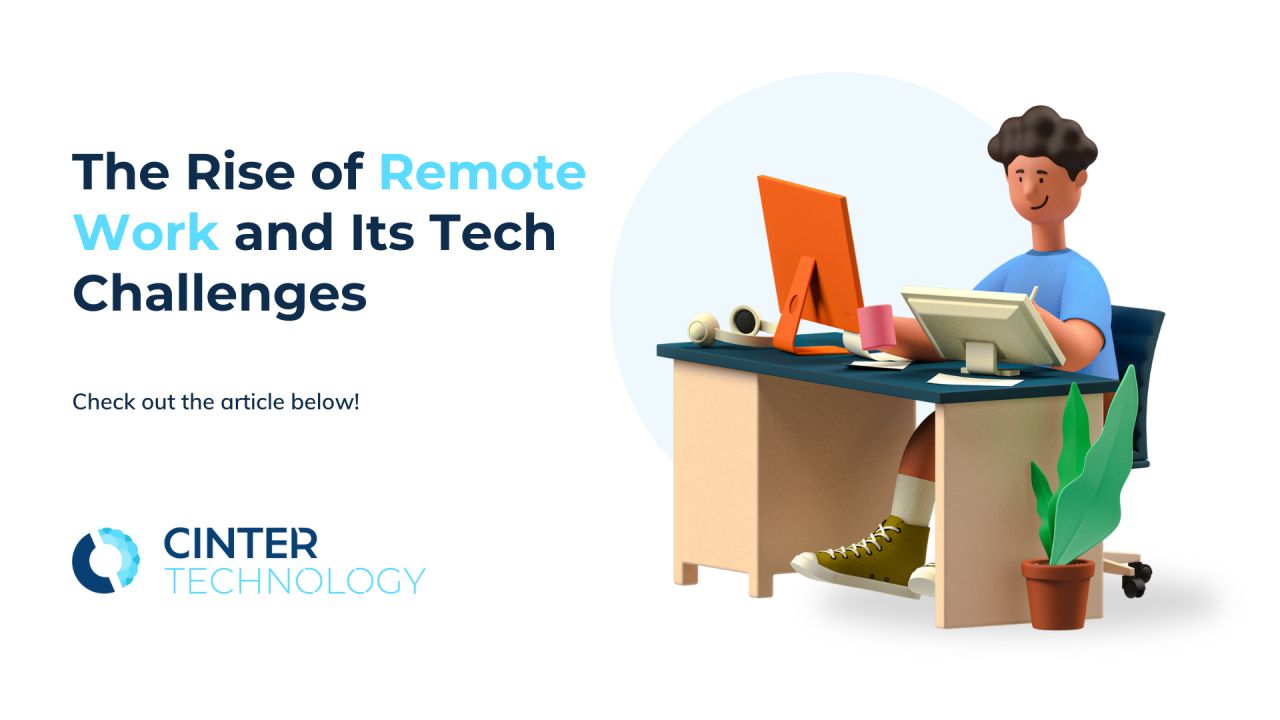
The COVID-19 pandemic has fundamentally transformed the work environment, making remote work a permanent fixture for many organizations. This shift has necessitated rapid adoption of new technologies and adaptation to unique challenges. As an IT service company, we recognize the importance of understanding these trends and overcoming the associated tech hurdles to ensure seamless and secure remote operations.
Technology Trends in Remote Work
Virtual Collaboration Tools
The backbone of effective remote work lies in robust virtual collaboration tools. Platforms like Zoom, Microsoft Teams, and Slack have seen exponential growth and development. These tools now offer comprehensive solutions beyond basic communication:
- Zoom: Features like breakout rooms and enhanced security protocols support seamless virtual meetings.
- Microsoft Teams: Integration with other Microsoft 365 apps and extensive third-party app support enables efficient project management and collaboration.
- Slack: With Slack Connect, organizations can collaborate securely with partners and clients outside their immediate network.
These tools are designed to maintain productivity and foster real-time collaboration, making distance a non-issue. However, they require proper integration and user training to unlock their full potential.
Challenges in Remote Work
Cybersecurity
The dispersed nature of remote work has heightened cybersecurity risks. Ensuring data protection across various unsecured home networks is critical. Key challenges include:
Phishing Attacks: Remote workers are more susceptible to phishing scams. Comprehensive training and awareness programs are essential to mitigate these risks.
- Data Protection: Implementing strong encryption protocols and secure data handling practices is crucial for protecting sensitive information.
- Endpoint Security: Securing devices used remotely, particularly with the rise of BYOD (Bring Your Own Device), is imperative. Robust endpoint protection solutions must be in place to safeguard against potential breaches.
Organizations must adopt multi-layered security strategies, including regular employee training, advanced threat detection, and stringent access controls, to protect their data and systems.
Network Optimization
Effective remote work depends heavily on network reliability and performance. However, home networks often fall short of corporate standards, leading to several issues:
- Bandwidth Limitations: Shared home networks can experience congestion, affecting video calls and data transfers.
- Latency and Downtime: Variations in internet service quality can cause disruptions, hindering productivity.
- VPN Overheads: While VPNs are necessary for secure access to corporate networks, they can introduce latency and consume significant bandwidth.
To address these challenges, companies can provide employees with better networking equipment or implement VDI (Virtual Desktop Infrastructure) technology to optimize and secure remote connections.
Future Trends
Looking ahead, several emerging technologies promise to further enhance remote work:
- Artificial Intelligence (AI) and Machine Learning: These technologies will enhance virtual collaboration tools, improve network performance, and bolster cybersecurity measures.
- 5G Technology: The advent of 5G will provide faster, more reliable internet connections, alleviating many current network issues.
- Extended Reality (XR): Augmented reality (AR) and virtual reality (VR) can offer immersive virtual meeting experiences and interactive training environments, pushing the boundaries of remote collaboration.
Conclusion
The rise of remote work presents both opportunities and challenges. By staying ahead of technology trends and addressing cybersecurity and network optimization challenges, businesses can ensure a productive, secure, and seamless remote work environment. As an IT service company, we are committed to providing the solutions and support needed to navigate this new landscape. Contact Cinter Technology today at sales@technology.cinter.net to learn more about how we can provide comprehensive IT solutions for your business.
Interested in learning more about Cinter Technology and how our services can help your business?


